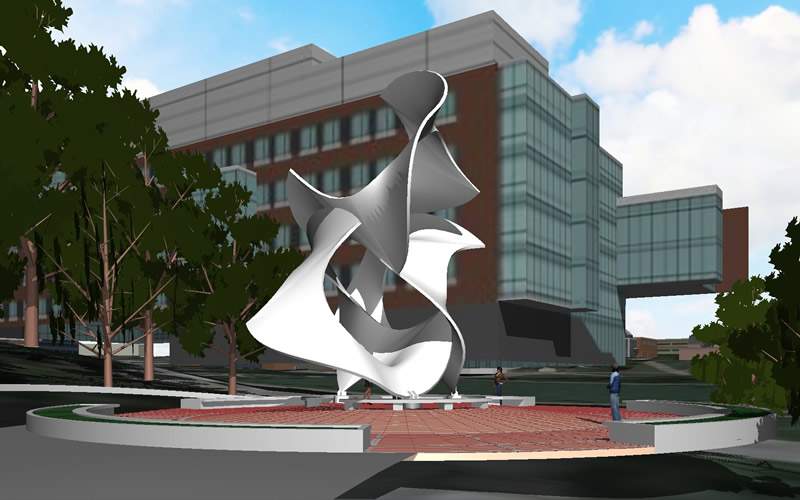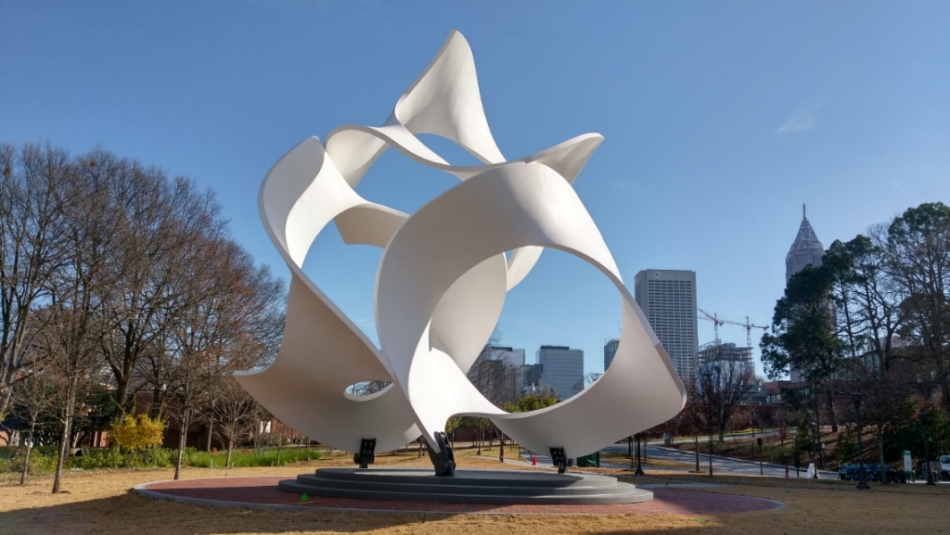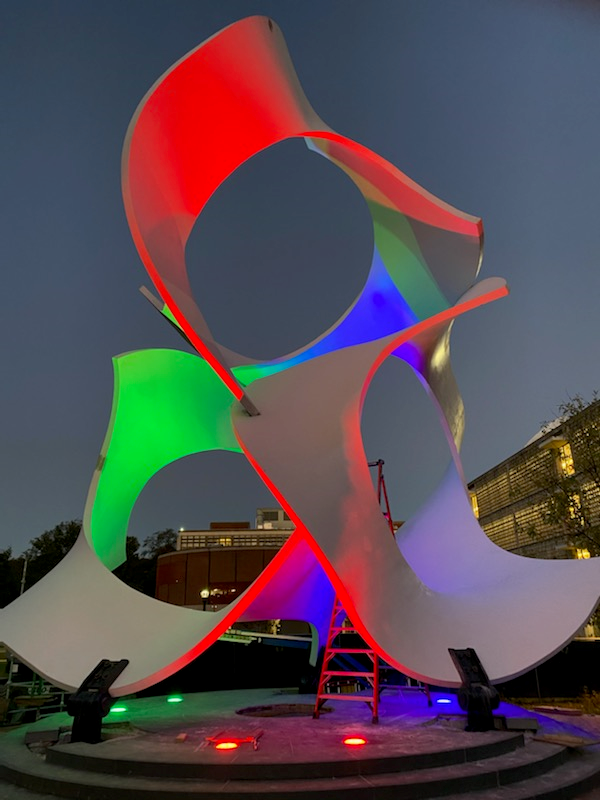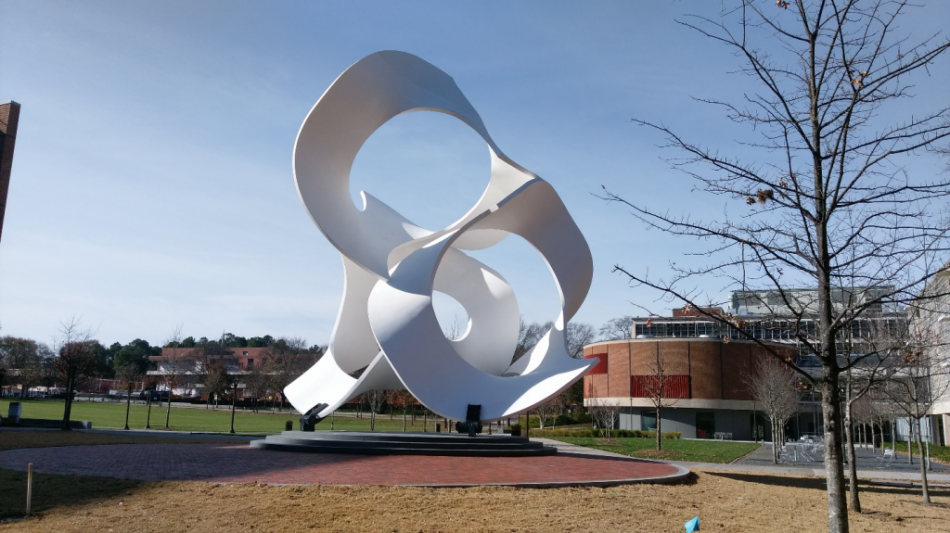The architect, developer, and artist who physically shaped Atlanta like no one else is still making an impact on the city, three years after his death.
John Portman, whose developments redefined Atlanta’s skyline, helped revive city centers around the world, and reinvent hotel design, was also a prolific sculptor. His large-scale public works are on display in prominent places across his beloved hometown, from Buckhead’s Charlie Loudermilk Park to several locations on downtown’s Peachtree Street.
But what could be Portman’s most striking public art piece in Atlanta—described by a former colleague as his “last sculpture masterpiece”—wasn’t unveiled until last week in the center of campus at Georgia Tech, Portman’s alma mater.
 An early rendering from 2018 illustrating the Koan project's scale in the center of campus. MTI Baths/Gwinnett Forum
An early rendering from 2018 illustrating the Koan project's scale in the center of campus. MTI Baths/Gwinnett Forum
Standing 40 feet tall, the twisting, airy confluence of complex shapes is designed to inspire and uplift young creative minds next to the College of Design, where Portman studied when it was called the School of Architecture, graduating in 1950. The piece is titled Koan—a nod to Zen Buddhism’s dialogues, paradoxes, and riddles.
Following a Friday dedication of Portman’s sculpture, Georgia Tech president Ángel Cabrera called the work by one of the school’s most notable alumni “magnificent,” a fusion of art and technology in a fitting, permanent location.
The process of bringing Portman’s final major sculptural vision into reality was herculean, spanning nearly three years.
 The sculpture and its amorphous Midtown backdrop, as seen from the west. Via Portman Architects, Steve Lin, AIA
The sculpture and its amorphous Midtown backdrop, as seen from the west. Via Portman Architects, Steve Lin, AIA
As Steve Lin, a Portman Architects senior associate, wrote in a retrospective of Portman’s sculptures this week, Koan’s three identical orbs—representing Knowledge, Research, and Creativity—couldn’t be achieved with any traditional material.
So the team opted for carbon fiber, similar to what’s used in the Boeing 787 Streamliner, and then turned to a supercomputer at Georgia Tech’s School of Aerospace Engineering to devise a structural system that could withstand powerful winds—ensuring the huge piece wouldn’t blow away, essentially.
But who could build such a thing?
After a long search, according to Lin, they opted for a speedboat builder in Augusta, an expert in crafting complex ship hulls from carbon fiber.
 At night, Koan glows with colorful uplighting. Via Portman Architects, Steve Lin, AIA
At night, Koan glows with colorful uplighting. Via Portman Architects, Steve Lin, AIA
The result, as Lin writes, “has quickly become the symbol of this top engineering university in the U.S.”
Portman died at age 93 in late 2017, leaving a legacy of architecture and development in Atlanta that includes a laundry list of downtown landmarks—Peachtree Center, Hyatt Regency, Westin Peachtree Plaza, and the Marriot Marquis among them. Portman’s company also designed the striking architectural entryway—made to resemble the wavy ribs of a massive animal—at the forthcoming Westside Park.
According to Cabrera, the Koan project was financed “through the generous support of the Portman family, former Atlanta Mayor Kasim Reed, [current] Mayor Keisha Lance Bottoms, and many generous donors.” No costs were specified.
“I love the message Koan will send on [Portman’s] behalf to the generations of Yellow Jackets to come,” wrote Cabrera on his office’s website. It’s “standing tall and unavoidable, ready to shake our logical, rational minds."
 Portman's installation. Via Portman Architects, Steve Lin, AIA
Portman's installation. Via Portman Architects, Steve Lin, AIA
• Koan and the art of technology (Georgia Tech)
• Atlanta's largest park is finally coming together. How it looks right now (Urbanize Atlanta)






